| Order Custom Size PlexiGlass sheets, cut to any size up to 72x48".
These Clear Acrylic Sheets are perfect for framing projects. They are lightweight, shatter resistant and easy to cut with common plastic-cutting tools. They will not yellow or crack due to direct exposure to sunlight.
Top brand names for Clear Acrylic/Plastic Sheets are Acrylite, Plexiglas, Crylux, Astariglass, OPTIX, Lucite, Perclax, and Perspex. We offer only Acrylite US made brand name and all are Picture Framing Grade quality.
| Picture Framing Grade Clear Acrylics: |
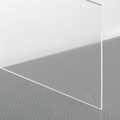 |
| Type |
Brand |
Color |
Thickness |
|
 |
Regular: |
FF3 Acrylite |
Clear |
0.098" - 2.4 mm |
|
 |
Non-Glare: |
P99 Acrylite |
Clear |
0.098" - 2.4 mm |
|
 |
Non-Glare & UV: |
OP3 P99 Acrylite |
Clear |
0.098" - 2.4 mm |
| |
|
| Color Acrylics: |
 |
| Type |
Color |
Thickness |
|
 |
Acrylic, White |
White/Opaque |
1/8" - 3.2 mm |
 |
Acrylic, Black |
Black/Opaque |
1/8" - 3.2 mm |
 |
Acrylic, Red |
Red/Opaque |
1/8" - 3.2 mm |
 |
Acrylic, Blue |
Blue/Opaque |
1/8" - 3.2 mm |
 |
Acrylic, Yellow |
Yellow/Opaque |
1/8" - 3.2 mm |
|
Opaque means that absolutely no light can get through the material.
Weight: ≈ 0.62 lbs/sq. ft. for 0.098" / 2.4mm thikness
|
| Volume discount rates*: |
| Qty |
2-5 |
6-10 |
11-50 |
51-100 |
| Discount |
5% |
10% |
15% |
20% |
* When ordering multiple sheets of the same type and size
|
| Picture Framing Grade Clear Acrylic/PlexiGlass: |
Acrylic is a versatile and durable plastic material known for its clarity and strength, often used in place of glass for a variety of artistic and framing applications. It is lightweight, shatter-resistant, and can be easily cut and shaped, making it ideal for both protective coverings and creative projects.
Acrylic sheets come in various types, including clear, colored, frosted, and mirrored, allowing artists to explore diverse visual effects. Additionally, its resistance to UV light ensures that it won't yellow or degrade over time, preserving the vibrancy and integrity of artworks displayed behind it.
|
|
Melting point: 160 °C
Density: 1.18 g/cm³
Weight: for 1/8"(.118", 3mm) thickness weight is 0.694 lbs/sq. ft.
Poly(methyl methacrylate) (PMMA), also known as acrylic, acrylic glass, or plexiglass, is a transparent thermoplastic often used in sheet form as a lightweight or shatter-resistant alternative to glass.
To read our article about Acrylic vs Glass: click here.
|
| Color Acrylic Sheets: |
| Color acrylic sheets are vibrant and versatile plastic materials available in a wide range of hues. These sheets offer the same durability, lightweight properties, and shatter resistance as clear acrylic but with the added benefit of color. They are perfect for creative projects, signage, decorative elements, and artistic displays, providing a bold and eye-catching aesthetic.
Color acrylic sheets can be easily cut, shaped, and engraved, making them suitable for various applications in art, design, and fabrication. Their UV resistance ensures that the colors remain vivid and do not fade over time, making them a reliable choice for both indoor and outdoor use. |
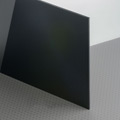 |
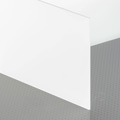 |
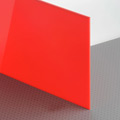 |
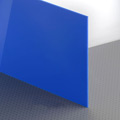 |
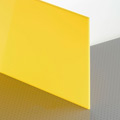 |
|
|
Differences Between Transparent, Translucent, and Opaque Acrylic Sheets
Transparent: Clear and allows maximum light passage, similar to glass. Ideal for display cases and windows.
Translucent: Allows light through but diffuses it, providing privacy while letting light in. Used for light fixtures and partitions.
Opaque: Blocks all light and is completely solid in color. Perfect for signage and artistic applications.
|
| Clear Acrylic blocks: |
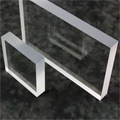 |
Our free-standing clear acrylic blocks are expertly crafted and pre-cut to a substantial 1-inch thickness, providing both durability and a high-end look. These blocks are available in a variety of popular sizes including 4x4", 4x6", 5x7", 6x6", and 6x9", allowing you to choose the perfect dimensions for your display needs. Each block can be positioned in either landscape or portrait mode, offering versatile display options to suit different orientations and preferences.
These acrylic blocks are ideal for tabletop displays, making them perfect for showcasing photographs, artwork, awards, or promotional materials. The clear, polished surface of the acrylic enhances the visual appeal of the displayed items, creating a sleek and modern presentation that captures attention and adds a touch of elegance to any setting.
For more information visit Acrylic Blocks, Custom Photo Gifts
|
| Ready-made/Pre-cut Plexiglass Sheets/Shapes: |
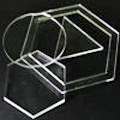 |
Ready-made and Pre-cut Plexiglass sheets are a convenient and versatile solution for various artistic and functional applications. We offer these sheets in a variety of shapes including rectangular, round, triangle, hexagon, and hollow hexagon, catering to diverse creative needs. Each shape is precision-cut to ensure consistency and quality, providing a durable, lightweight, and shatter-resistant alternative to glass.
These Plexiglass sheets are ideal for projects such as signage, decorative elements, protective barriers, and custom displays. Their clarity and strength make them perfect for both indoor and outdoor use, ensuring long-lasting performance and visual appeal.
For more information visit Ready-made Plexiglass Sheets/Shapes
|
| Custom Cut Acrylic Shapes: |
| We specialize in custom-cut acrylics tailored to your needs, using state-of-the-art CO2 laser machines for precise and high-quality cuts. Perfect for signage, display cases, protective barriers, and creative art projects, our service handles intricate designs and unique shapes with exceptional detail. Our skilled team works closely with you to deliver durable, professional-grade acrylics that meet your exact specifications, ensuring your project stands out.
For a rate quote, please send us the layout, ideally as an SVG, along with the quantity, material, and thickness, and we will provide you with a quote.
To learn more visit Custom Shape Laser Cutting page.
|
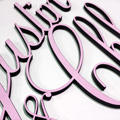 |
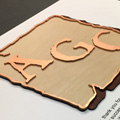 |
 |
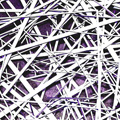 |
 |
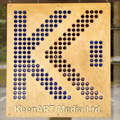 |
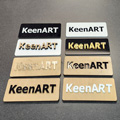 |
|
| Acrylic Sheet FAQs: |
 |
Q1 : What are the benefits of acrylic over glass?
Acrylic is stronger, more impact resistant, lighter in weight, will not shatter, is easier to fabricate, and can be easily formed.
Q2 : Does acrylic yellow in the sun?
Acrylic, especially high-quality brands like Acrylite, does not yellow when exposed to sunlight. Our Plexiglass sheets are designed to be UV resistant, ensuring that they remain clear and transparent even after prolonged exposure to direct sunlight. This makes them an excellent choice for framing projects that will be displayed in well-lit areas.
Q3 : How do you repair a scrached Acrylic sheet?
You can fix it using Novus #2 or #3 if a minor scrach otherwsie, you will need to sand and buff the area that is scratched to return the shine.
Q4 : How do you clean Acrylic Sheets?
Use a soft, lint-free cloth and a mild soap or specialized acrylic cleaner. Avoid using paper towels, abrasive cleaners, or ammonia-based products as they can scratch or damage the surface.
Q5 : What is non-glare acrylic?
Non-glare Acrylic Sheets has a matte finish, designed to minimize glare and reflection from most viewing angles. Its subtle textured finish creates a glare-free view from any angle, while showing off the natural beauty of your artwork and prints.
Its subtle textured surface on one-side creates a glare-free view from any angle, while showing off the natural beauty of your artwork and prints. This extruded sheet’s thickness tolerance make it ideal for braille signage. Its high optical quality and the fact that it contains 0% recycled content significantly reduce the occurrence of issues such as voids and char which can be found in other non-glare sheets.
Q6 : What is Plexiglass and how is it different from glass?
Plexiglass is a brand name for acrylic sheets, a type of plastic that is lightweight, shatter-resistant, and more durable than traditional glass. Unlike glass, Plexiglass does not yellow or crack with exposure to sunlight and is easier to cut and handle.
Q7 : What are the advantages of using Plexiglass over traditional glass?
Plexiglass is lighter, safer (shatter-resistant), and easier to cut and install than traditional glass. It also provides better UV protection and does not yellow or crack over time, making it ideal for preserving artwork.
Q8 : What types of Plexiglass do you offer for picture framing?
We offer three types of clear acrylic sheets:
Regular: FF3 Acrylite, Clear, 0.098" (2.4 mm)
Non-Glare: P99 Acrylite, Clear, 0.098" (2.4 mm)
Non-Glare & UV: OP3 P99 Acrylite, Clear, 0.098" (2.4 mm)
Q9 : What is the difference between Regular, Non-Glare, and Non-Glare & UV Plexiglass?
Regular: Clear and standard acrylic for general use.
Non-Glare: Reduces reflections and glare, ideal for artworks displayed in bright areas.
Non-Glare & UV: Combines the benefits of non-glare with added UV protection to prevent artwork from fading.
Q10 : Is Plexiglass safe for all types of artwork?
Yes, Plexiglass is safe for all types of artwork, including photographs, paintings, and prints. The non-glare and UV-protective options provide additional protection for sensitive artworks.
Q11 : Can Plexiglass be cut to custom sizes?
Yes, Plexiglass can be easily cut to custom sizes using common plastic-cutting tools. If you need a specific size, please provide the dimensions, and we can cut it for you.
Q12 : What are the top brand names for clear acrylic sheets?
Top brand names include Acrylite, Plexiglas, Crylux, Astariglas, OPTIX, Lucite, Perclax, and Perspex. We offer only the Acrylite US-made brand name, which is Picture Framing Grade quality.
Q13 : Is Plexiglass as clear as glass?
Yes, high-quality Plexiglass, such as the Acrylite brand we offer, is optically clear and provides excellent visibility, comparable to traditional glass.
Q14 : Does Plexiglass scratch easily?
Plexiglass is more prone to scratching than glass. To prevent scratches, handle it with care, avoid abrasive cleaners, and consider using a protective coating or scratch-resistant Plexiglass if necessary.
Q15 : How do I remove scratches from Plexiglass?
Minor scratches can be polished out using a plastic polish or a paste made from baking soda and water. For deeper scratches, a professional polishing kit designed for acrylic may be required.
Q16 : Can I drill holes into Plexiglass?
Yes, you can drill holes into Plexiglass using a drill bit designed for plastic. Make sure to use a low-speed setting and apply gentle pressure to avoid cracking. We do offer custom shape cuts using our CO2 laser too.
Q17 : Is Plexiglass fire-resistant?
Plexiglass is not inherently fire-resistant and can melt or burn at high temperatures. For applications requiring fire resistance, consider using fire-rated acrylic or glass.
Q18 : Can Plexiglass be recycled?
Yes, Plexiglass is recyclable. Check with local recycling programs to ensure they accept acrylic materials, or find a specialized recycling facility for plastics.
Q19 : Can I paint or add designs to Plexiglass?
Yes, Plexiglass can be painted or decorated using acrylic paints, permanent markers, or specialized plastic paints. Make sure to clean the surface thoroughly before applying any design.
Q20 : Is it possible to get custom shapes and sizes of Plexiglass?
Yes, using our CO2 Lasers we can cut Plexiglass to custom shapes and sizes to fit your specific framing project. Please provide detailed dimensions and any special requirements.
Q21 : What precautions should I take when handling large Plexiglass sheets?
When handling large Plexiglass sheets, always use gloves to avoid fingerprints and support the sheet to prevent bending or cracking. It's best to have a second person assist with larger pieces to ensure safe handling.
Q22 : What file formats are required for laser cut and engraving?
Vector Files
- SVG (Scalable Vector Graphics): Ideal for laser cutting due to its scalability and precision.
- AI (Adobe Illustrator): Provides precise control over vector paths, popular among designers.
- DXF (Drawing Exchange Format): Common in CAD applications and supported by most laser cutting software.
- EPS (Encapsulated PostScript): Widely supported vector format, suitable for high-quality, scalable designs.
- PDF (Portable Document Format): Can be used for both vector and raster images; ensure the content is vector-based for cutting.
Raster Files (for Engraving)
- BMP (Bitmap): Suitable for high-resolution images required for detailed engraving.
- PNG (Portable Network Graphics): Supports transparency and high resolution, ideal for detailed designs.
- JPG/JPEG (Joint Photographic Experts Group): Common for photographs and images; ensure high resolution for quality engraving.
- TIFF (Tagged Image File Format): High-quality, uncompressed format, suitable for detailed image engraving.
Additional Tips
- Vector vs. Raster: Use vector files for cutting and detailed line work. Use high-resolution raster files for engraving images and textures.
- Resolution: For raster images, ensure a resolution of at least 300 DPI (dots per inch) for clear and detailed engraving.
- Color Mode: Use grayscale images for engraving to control the depth based on intensity.
- File Preparation: Convert all text to outlines/paths in vector files and clean up unnecessary nodes for smooth cutting.
By using these file formats and following best practices, you can achieve precise and high-quality results in your laser cutting and engraving projects.
Q23 : List the differences Between Cast and Extruded Acrylic for Laser Cutting and Engraving.
Differences Between Cast and Extruded Acrylic for Laser Cutting and Engraving
When it comes to laser cutting and engraving, the type of acrylic you choose can significantly affect the quality and characteristics of your work. Here are the key differences between cast and extruded acrylic:
Cast Acrylic
- Quality and Appearance
- Higher Quality: Cast acrylic generally offers superior quality, resulting in a clearer, more polished finish.
- Color Consistency: Better color consistency throughout the material.
- Laser Cutting
- Edge Finish: Produces a smooth, flame-polished edge when laser cut.
- Thickness Tolerance: Greater thickness tolerance, leading to more consistent cuts.
- Laser Engraving
- Engraving Quality: Provides a white, frosted appearance when engraved, making it ideal for detailed and high-contrast designs.
- Depth of Engraving: More consistent and deeper engravings compared to extruded acrylic.
- Cost
- Higher Cost: Typically more expensive than extruded acrylic due to the manufacturing process.
Extruded Acrylic
- Quality and Appearance
- Lower Quality: May have minor impurities and less optical clarity compared to cast acrylic.
- Color Variability: Slight color variations can occur within the same sheet.
- Laser Cutting
- Edge Finish: Produces a less smooth edge, often with a slight burr, which may require additional finishing.
- Thickness Tolerance: Tighter thickness tolerance, which can result in more precise cutting dimensions but less flexibility.
- Laser Engraving
- Engraving Quality: Engraving results in a more transparent look, which may not provide as much contrast as cast acrylic.
- Depth of Engraving: Shallower engravings compared to cast acrylic, often requiring multiple passes for depth.
- Cost
- Lower Cost: Generally more affordable than cast acrylic, making it a cost-effective option for less critical applications.
Summary
Cast Acrylic: Ideal for high-quality, detailed, and visually appealing laser cutting and engraving projects. It provides a better finish and more consistent results but comes at a higher cost.
Extruded Acrylic: Suitable for applications where budget is a concern, and the highest quality finish is not required. It offers cost savings but may require additional processing to achieve the desired finish.
By understanding these differences, you can choose the right type of acrylic for your specific laser cutting and engraving needs, ensuring optimal results for your projects.
Q24 : Compare Differences Between Transparent, Translucent, and Opaque Colors for Acrylic Sheets
Transparent Acrylic Sheets
Transparent acrylic sheets are clear and allow light to pass through them without significant diffusion, similar to how glass works. These sheets are perfect for applications requiring maximum visibility and light transmission, such as display cases, picture framing, and windows.
Translucent Acrylic Sheets
Translucent acrylic sheets allow light to pass through but diffuse it, meaning you can't see through them clearly. They provide some level of privacy while still letting light in. These sheets are often used for light fixtures, partitions, and decorative elements where you want a soft, diffused light.
Opaque Acrylic Sheets
Opaque acrylic sheets do not allow light to pass through at all. They are completely solid in color and are used in applications where visibility through the material is not desired. These sheets are ideal for signage, protective barriers, and artistic applications where bold, solid colors are needed.
|
|
| If you don't find the answer you're looking for here, please contact us. |
|
